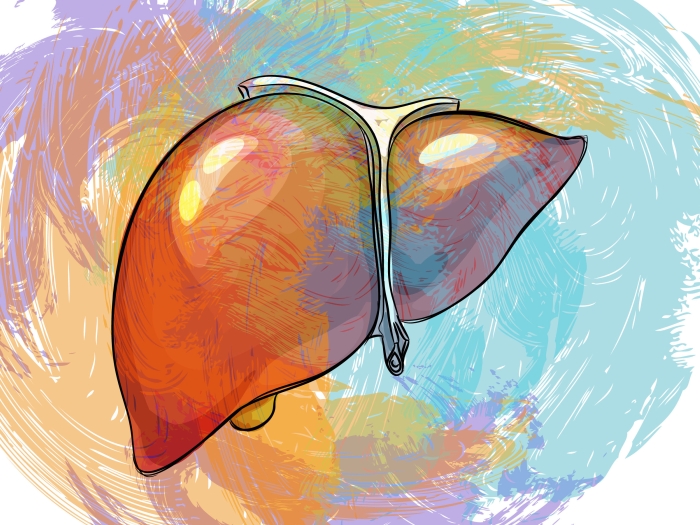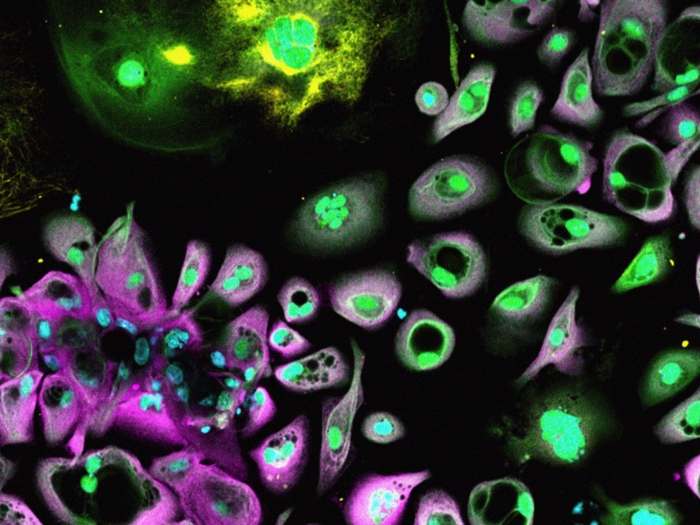An international team of researchers conducts a study that defines a simple, low-cost blood test that yields high-performing results in the elimination of hepatitis C.
5:00 AM
Author |
Chronic hepatitis C virus (HCV) affects over 70 million people worldwide and is a leading cause of cirrhosis and liver cancer. An estimated three to four million Americans have chronic HCV infection, with many of them being baby boomers born between 1945 and 1965. However, a second wave of HCV infection is now being seen in younger adults between the ages of 18 and 40, including pregnant women.
"I think that it's important to note that this shift in demographics is likely attributed to the rise of both the opioid epidemic and illicit drug use," says Robert Fontana, M.D., University of Michigan's medical director of liver transplantation. "When left untreated, patients with chronic hepatitis C are at an increased risk for liver cirrhosis, which can ultimately lead to death."
In the past decade, novel direct acting antivirals, or DAAs, have revolutionized the treatment of chronic HCV by yielding treatment success rates of over 95% among various types of patients impacted by the infection.
LISTEN UP: Add the new Michigan Medicine News Break to your Alexa-enabled device, or subscribe to our daily updates on iTunes, Google Play and Stitcher.
A sustained virologic response (SVR) from DAAs decreases long-term health risks associated with chronic HCV and subsequently improves patient quality of life. Yet, despite the availability and benefit of DAAs, individuals with HCV still experience barriers when trying to access care.
"At a worldwide level, these roadblocks often exist because medical specialists are needed to identify the presence of cirrhosis by conducting liver biopsies or liver elastography testing before initiating treatment," says Fontana.
From a global perspective, this inspired Fontana and a team of researchers to conduct a study to determine if a simple and low-cost blood test called the aspartate aminotransferase to platelet ratio index (APRI) could be used to select patients for a shorter HCV treatment plan with high-performing results. Incidentally, the APRI test was initially developed by a team of liver researchers, including Fontana, at the University of Michigan in 2003.
"APRI is determined from a blood test, thereby providing a low-cost, widely available, non-invasive method that has a high negative predictive value (94%) for cirrhosis at an APRI cutoff of one, when compared to liver biopsy," says Fontana. "This makes it a very effective tool."
It is really quite remarkable how quickly we have come to simple, once daily and highly effective oral DAA regimens that can lead to a nearly 100% rate of viral clearance. These are big steps in the path towards HCV elimination efforts worldwide.Robert Fontana, M.D.
The World Health Organization (WHO) established a global target for eliminating HCV by 2030. But in order to do this, their initiative depends on access to low-cost and scalable testing for HCV infection, as well as access to effective DAA treatments.
"Treatment guidelines in the U.S. and Europe recommend both genotype and fibrosis (or cirrhosis) testing in order to best determine the most effective DAA regimen and treatment plan for HCV," says Fontana. "Even though liver biopsy and transient elastography have primarily been used for these types of testing, non-invasive (and more widely available) blood-based markers may be used to assess for cirrhosis prior to HCV treatment."
While the elimination of HCV is now reliant on powerful drug combinations like glecaprevir/pibrentasvir (G/P), the WHO must depend on the availability of low-cost and scalable testing tools, as well as access to the drugs, in order to carry out their elimination initiative.
Therefore, Fontana and his team evaluated whether or not eight-weeks of G/P is safe for use, while eliminating the virus in patients with an APRI less than a predetermined threshold of one, no prior HCV treatment experience, and no evidence of liver scarring or damage.
"Surprisingly, we found that an eight-week course of G/P in these selected patients was both safe and effective in eliminating the virus in over 96% of the patients treated," says Fontana. "In addition, none of our patients failed to respond to the treatment plan or lost their initial response."
Future impact
Incredibly, Fontana and the team of 43 investigators from 10 countries found that the predetermined APRI threshold can be used in clinical practice as a simplified pretreatment assessment to select patients with chronic HCV. In addition, these patients must not have any prior HCV treatment experience or show evidence of advanced liver disease for the eight-week G/P regimen.
MORE FROM MICHIGAN: Sign up for our weekly newsletter
And their study has significant implications for how patients with HCV are treated around the world.
"Going forward, clinicians can confidently use the APRI to identify HCV patients with milder liver disease who can safely and effectively be treated with an eight-week DAA regimen," says Fontana. "This will eliminate the need for a referral to a specialist for possible liver biopsy or elastography testing."
Furthermore, Fontana adds, "It is really quite remarkable how quickly we have come to simple, once daily and highly effective oral DAA regimens that can lead to a nearly 100% rate of viral clearance. These are big steps in the path towards HCV elimination efforts worldwide."
Paper cited: Fontana et al. "Efficacy and Safety of 8 Weeks of Glecaprevir/Pibrentasvir in Treatment-Naïve, HCV-Infected Patients with APRI ≤ 1 in a Single-Arm, Open-Label, Multicenter Study," Advances in Therapy. DOI: 5-019-01123-0.

Explore a variety of healthcare news & stories by visiting the Health Lab home page for more articles.

Department of Communication at Michigan Medicine
Want top health & research news weekly? Sign up for Health Lab’s newsletters today!





